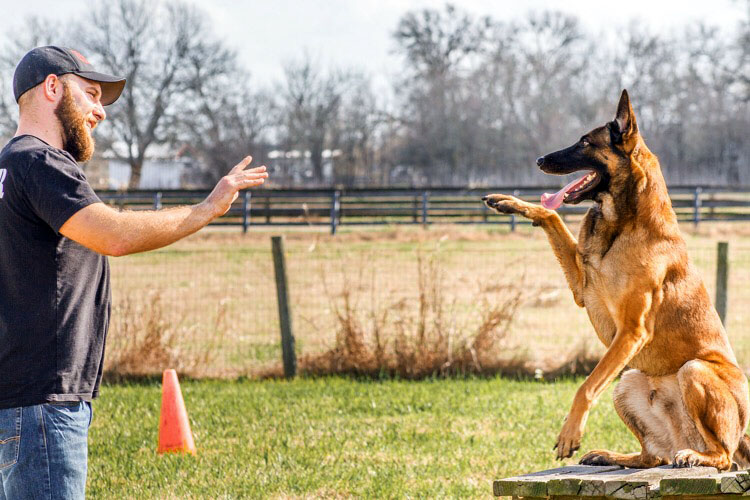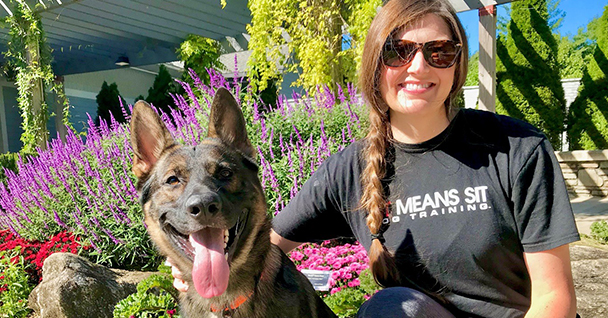Usual Behavioral Issues and Their Solutions in Dog Training
Usual Behavioral Issues and Their Solutions in Dog Training
Blog Article
Necessary Tips for Effective Dog Training: A Guide for Pet Dog Owners
Efficient canine training is a diverse process that needs a critical approach customized to both the family pet's personality and the owner's objectives. Trick parts such as establishing consistent commands, utilizing positive reinforcement, and facilitating early socialization play important functions in promoting a well-adjusted canine buddy. Nevertheless, several pet dog owners encounter challenges that can prevent progression, causing frustration and unpredictability. Understanding how to navigate these obstacles can considerably enhance the training experience, ultimately changing the partnership between proprietor and pet. What are the crucial strategies that can be employed to make certain success in this endeavor?
Recognizing Dog Habits
Recognizing pet actions is important for reliable training and fostering an unified partnership between pooches and their owners. Pet dogs interact mainly with body movement, articulations, and activities, making it critical for owners to interpret these signals precisely. Identifying a pet's stance, tail position, and ear positioning can offer understandings right into its emotion. A wagging tail does not always show joy; it can also signify enjoyment or anxiousness.

Socialization plays a significant duty in pet actions; exposure to different atmospheres, individuals, and various other animals can substantially impact a dog's temperament. Moreover, elements such as breed characteristics and specific personality ought to guide training techniques, as some breeds may have certain behavioral qualities that necessitate customized strategies. By recognizing these aspects, proprietors can produce a helpful setting that encourages favorable actions, bring about successful training results and a deeper bond with their family pets.
Establishing Constant Commands
Reliable communication with your pet dog begins with establishing constant commands. This foundational aspect of training is essential for promoting understanding in between you and your animal. Uniformity in the commands you make use of makes certain that your dog can accurately associate particular words or expressions with the wanted habits.
When choosing commands, select clear, unique words that are simple to set apart and state from each other. Avoid utilizing similar-sounding commands that may puzzle your canine. For example, utilizing "rest" and "remain" is suitable, but "rest" and "hit" can cause misunderstandings.
In addition, keep the exact same tone and quantity for each and every command. Canines are delicate to vocal cues, so varying your tone can create complication.
It is equally vital to guarantee that all member of the family are on the very same page regarding the commands utilized. A united front in command usage will prevent mixed signals and strengthen the discovering process.
Positive Support Strategies
The power of positive support in dog training exists in its ability to urge wanted behaviors through incentives and praise. This method is grounded in the principle that actions adhered to by desirable results are most likely to be repeated. By incorporating positive support into your training program, you can effectively form your pet dog's habits in a constructive fashion.
To carry out favorable support, it's vital to recognize what motivates your pet, whether it be treats, playthings, or verbal praise. When your pet does a wanted activity, such as sitting on command, immediately award them with a treat or affection. This association between the command and the positive outcome reinforces their understanding.
It's crucial to timing the rewards properly; delivering the support within seconds of the preferred actions aids your pet make the link (dog training). Additionally, consistency is key-- make certain that all member of the family utilize the same commands and benefit systems to stay clear of confusion

Progressively, you can lower the frequency of treats as your pet learns the behavior, transitioning to commend or periodic benefits. This approach not only fosters a solid bond between you and your pet dog however also advertises a positive learning setting, making educating a pleasurable experience for both.
Socialization and Interaction
Continually exposing your dog to a range of environments, individuals, and various other pets is crucial for their social advancement. Socialization must begin early, ideally throughout the important window of 3 to 14 weeks, when click to find out more puppies are most responsive to brand-new experiences. Nevertheless, older pet dogs can also gain from recurring socializing efforts.
Present your pet dog to different settings, such as parks, pet-friendly shops, and metropolitan locations. This exposure aids them adjust to different stimuli, lowering stress and anxiety and anxiety reactions. Urge favorable interactions with other pets and people, making sure that these encounters are safe and regulated to cultivate self-confidence.
Make use of organized playdates with well-mannered pet dogs, as this can boost your pet's social skills and show them appropriate habits. Obedience courses and training sessions also give exceptional chances for socialization, allowing your dog to interact with others in a monitored atmosphere.
Display your canine's body movement throughout interactions, as this will certainly aid you assess their convenience level. Gradually increase direct exposure to even more difficult scenarios while guaranteeing that each experience declares. A well-socialized pet dog is more probable to display well balanced try this site habits, making them a happiness to have in any type of setting.
Addressing Typical Training Challenges
Every dog proprietor will run into training obstacles at some time, no matter of their pet dog's age or socializing level. Recognizing common issues such as stubbornness, disturbances, and fearfulness can help in establishing efficient strategies for improvement.

Slowly present interruptions as the pet dog comes to be extra skillful in commands. Short, frequent training sessions are additionally reliable in preserving focus.
Fearfulness can prevent a pet dog's knowing process. Steady desensitization to the resource of fear, coupled with favorable support, can assist reduce stress and anxiety. Patience is vital; never require a dog into a scenario that creates distress, as this may aggravate the concern.
Eventually, understanding and addressing these typical obstacles with a structured technique will promote a more effective training experience, enhancing the bond in between canine and proprietor while promoting effective learning.
Final Thought
In recap, successful dog training counts on a detailed understanding of canine habits, the facility of constant commands, and the application of favorable reinforcement methods. Socialization plays a critical function in establishing well-adjusted animals, while addressing usual training obstacles calls for persistence and flexibility. By applying these vital techniques, pet owners can promote a strong bond with their dogs and advertise preferable actions, eventually causing why not find out more a harmonious partnership between humans and their canine buddies.
Comprehending pet actions is vital for efficient training and cultivating an unified partnership between canines and their proprietors.Socializing plays a considerable duty in pet actions; direct exposure to different environments, people, and other pets can significantly impact a pet's personality.The power of favorable support in dog training exists in its capacity to urge wanted actions via benefits and praise. By incorporating favorable reinforcement right into your training routine, you can effectively shape your pet's habits in a positive manner.
In recap, effective canine training counts on a thorough understanding of canine habits, the facility of regular commands, and the application of positive support techniques.
Report this page